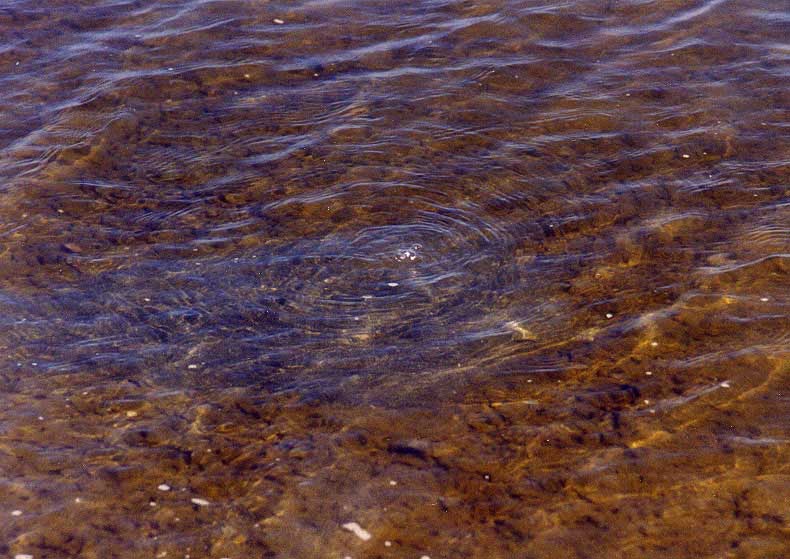


In the calm, shallow waters south of Dungeness Spit, I saw bubbles coming up from the muddy bottom. The water was maybe 6 inches deep 5 feet from the shoreline. I could see the bottom clearly. Bubbles were floating up to the surface. The bubbles were big, maybe 2 inches across where they broke the surface. The bubbles were big enough to make ripples in the gentle waves.
These bubbles are evidence of a big shellfish called a Geoduck (say "gooey-duck"). Now, I know the name looks like "geo-duck," but it is pronounced "gooey-duck." Another way to spell the name is Gweduc, which looks a lot more like the word sounds.
A Geoduck is a type of clam. It is a bivalve, which means that it has two shells hinged together. But the body of the Geoduck is so big that it spills out from the shells in a long neck called a siphon. Geoducks live in holes in the mud. They dig down into the mud and stretch their long siphon back to the muddy ocean floor so they can breathe. And those are the bubbles you see. They are the carbon dioxide produced by the Geoduck's breathing.
Geoducks can be enormous. A Geoduck can dig holes up to four feet deep, with a 4-foot-long siphon that extends from its shell back to the muddy ocean floor. Big Geoducks can weigh as much as 12 pounds.